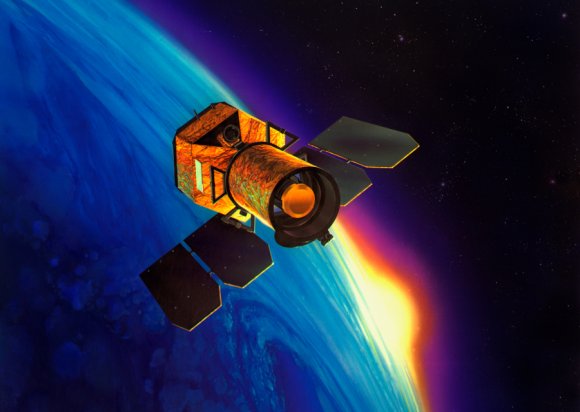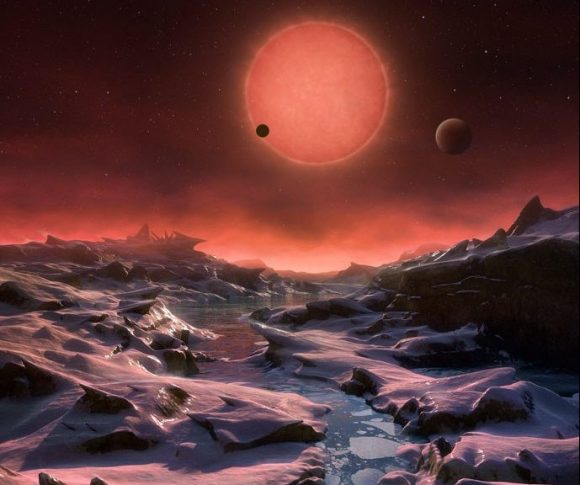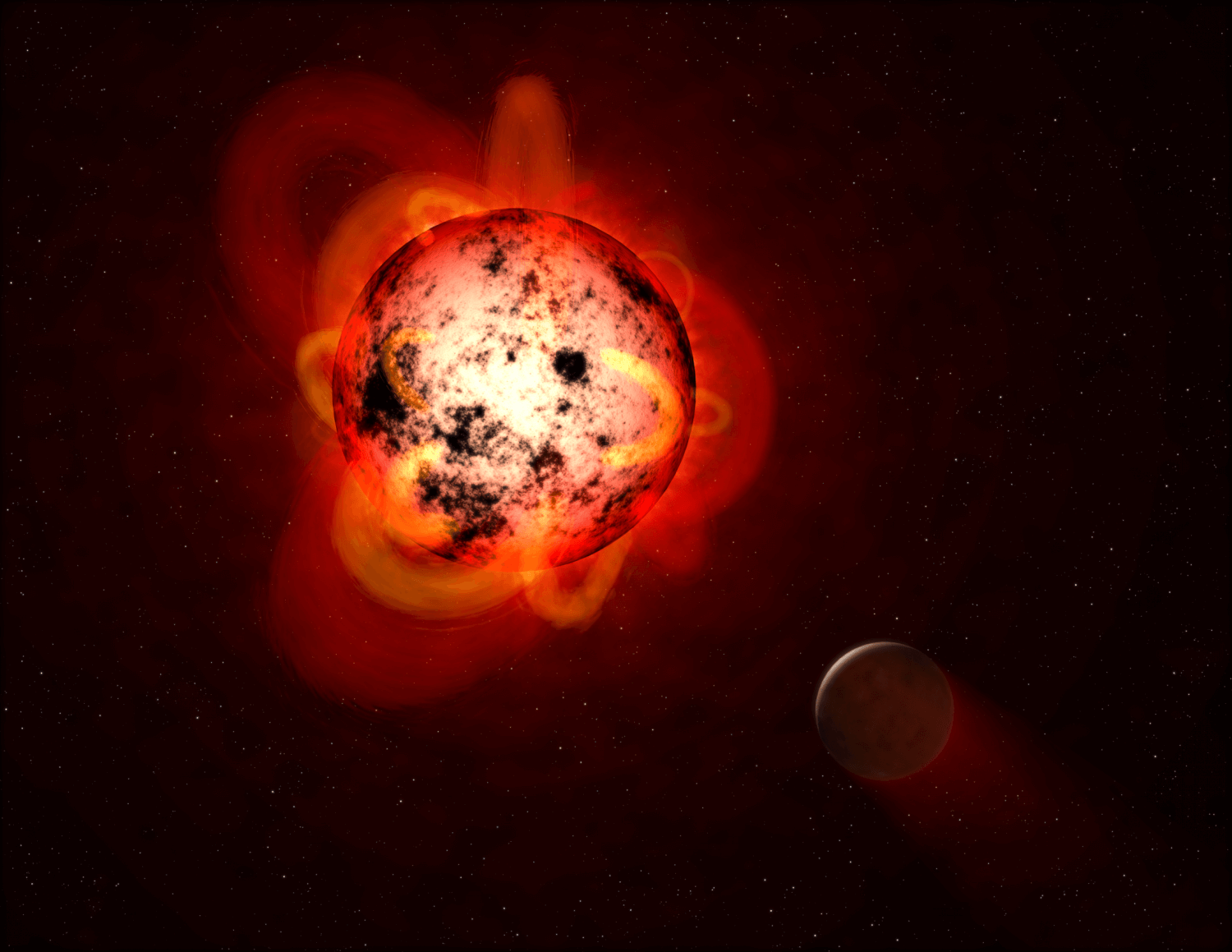Thanks to some rather profound discoveries, red dwarf stars (aka. M-type stars) have been a popular target for exoplanet hunters lately. While small, cool, and relatively dim compared to our Sun, red dwarf star systems are where many of the most recent and promising exoplanet finds have been made. These include Proxima b, the seven rocky planets orbiting TRAPPIST-1, and the super-Earth discovered around LHS 1140b.
Unfortunately, red dwarf stars pose a bit of a problem when it comes to habitability. In addition to being variable in terms of the light they put out, they also known for being unstable. According to a new study by a team of scientists – which was presented the this week at the annual meeting of the American Astronomical Society – red dwarfs also experience mini-flares that could have a cumulative effect, thus rendering their orbiting planets uninhabitable.
For the sake of their study, titled “gPhoton: The GALEX Photon Data Archive“, the team relied on the ten years of ultraviolet observations made by the Galaxy Evolution Explorer (GALEX) spacecraft. During its mission, which ran from 2003 to 2013, GALEX monitored stars to detect rapid increases in brightness – i.e. signs of solar flare activity. These flares emit radiation across many wavelengths, but a significant amount is released in the UV band.

Though not originally intended for exoplanet hunting, GALEX’s data proved very useful since red dwarfs are usually relatively dim in the ultraviolet band (a trait which makes flares particularly noticeable). Using this data, the team was able to measure events that were less intense than many previously detected flares. This was important, since red dwarf flares are known to be greater in frequency, but weaker in intensity.
It was also important from a habitability standpoint, since it is possible that frequent flaring could add up over time to create an inhospitable environment on orbiting planets. If planets like Proxima b are subject to radiation from smaller (but more frequent) flares, could there be a cumulative effect that could ultimately prevent life from emerging over time?
Such is the question that the team sought to address. To do this, they sorted through the ten years of GALEX data, which is held at the Mikulski Archive for Space Telescopes (MAST) at the Space Telescope Science Institute (STScI). Led by Chase Million of Million Concepts at State College in Pennsylvania, their efforts led to the creation of gPhoton – a 130 terabyte database with millisecond-timing resolution.
This database was then examined with custom software developed by Million and Clara Brasseur of the STScI, which enabled them to analyze the UV data at the photon level. As Million indicated, the results were quite interesting. “We have found dwarf star flares in the whole range that we expected GALEX to be sensitive to,” he said, “from itty bitty baby flares that last a few seconds, to monster flares that make a star hundreds of times brighter for a few minutes.”
While many of the flares that GALEX noticed were similar in strength to those generated by our Sun, the dynamics of red dwarf star systems are quite different. Since they are cooler and less bright, rocky planets need to orbit closer to red dwarfs in order to be warm enough to maintain liquid water on their surfaces (i.e. be habitable). This proximity means that they would be subject to more of the energy produced by these flares.
Such flares would be capable of stripping away a planet’s atmosphere, and could also prevent life from arising on the surface. And over time, smaller flares could poison an environment, making it impossible for organic life to thrive. At present, team members Brasseur and Rachel Osten (also from the STScI) are examining other stars observed by GALEX and also Kepler to look for similar flares.
The team expects to find examples of hundreds of thousands of these flares, which could help shed additional light on just what effect they could have on planetary habitability in red dwarf star systems. But for the time being, the case for red dwarf habitability appears to have been weakened. And once again, it has to do with the instability and radiation produced by these cool customers.
In the future, next-generation missions like the James Webb Space Telescope (which is scheduled to launch in 2018) are expected to reveal vital information on the atmospheres of nearby exoplanets. Most of these reside in red dwarf star systems, where questions about their composition and ability to support life are waiting to be resolved. In addition, the mission can also expected to shed light on these planet’s ability to retain atmospheres.

On the plus side, this study has shown that archival data from missions that are no longer in operation can still be incredibly useful. As Don Neill, a research scientist at Caltech and a member of the GALEX collaboration, explained:
“These results show the value of a survey mission like GALEX, which was instigated to study the evolution of galaxies across cosmic time and is now having an impact on the study of nearby habitable planets. We did not anticipate that GALEX would be used for exoplanets when the mission was designed.”
These results were presented in a press conference at the American Astronomical Society, which will be taking place from June 4th to June 8th in Austin, Texas.
Further Reading: HubbleSite, The Astrophysical Journal


To give the UT readers credit, they have always been quick to point this out when the public gets excited about the latest exoplanets discovered orbiting in the “habitable zone” of a red dwarf.
This study is sobering to be sure, but as we have learned by the bonanza of exoplanet discoveries is that when it comes to planetary systems anything is possible. Based on this it is reasonable to expect a much greater percentage of these planets will have had their atmosphere burned off and will be barren lifeless rocks like the moon. But as with any general conclusion about a large group of bodies, there are always going to be exceptions. Some red dwarfs may not be active at some point in their evolution or even at all. Some planets may have particularly strong magnetic fields that can deflect even this degree of persistent bombardment. The good news is that we will not have to wait too long for answers as the next generation of telescopes will be able to answer this question directly.